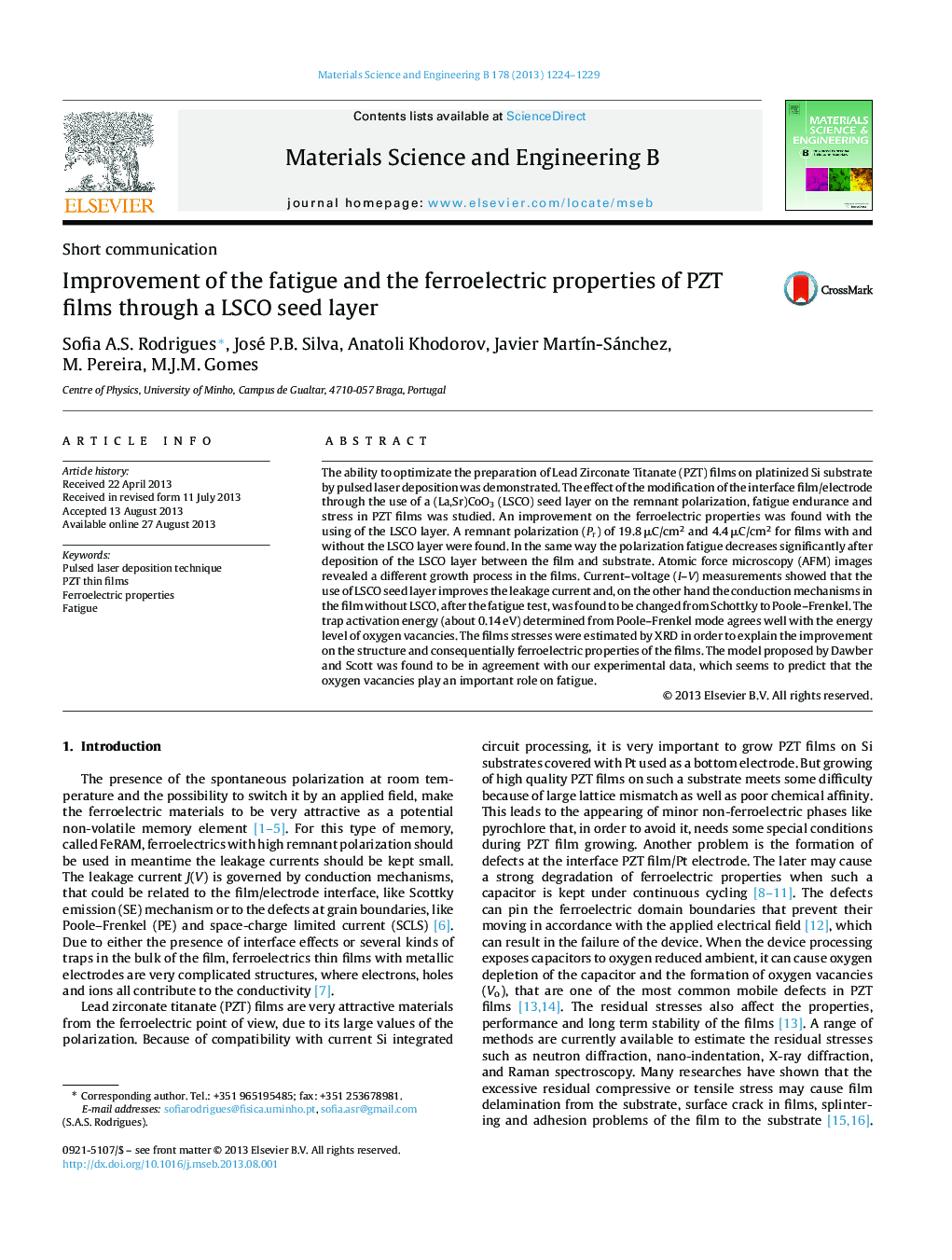| Article ID | Journal | Published Year | Pages | File Type |
|---|---|---|---|---|
| 1528929 | Materials Science and Engineering: B | 2013 | 6 Pages |
•Pulsed laser deposited PZT thin films.•Seed layer effect on the structural and ferroelectric properties of the PZT films.•The stability of Pr was improved with the introduction of the LSCO layer.
The ability to optimizate the preparation of Lead Zirconate Titanate (PZT) films on platinized Si substrate by pulsed laser deposition was demonstrated. The effect of the modification of the interface film/electrode through the use of a (La,Sr)CoO3 (LSCO) seed layer on the remnant polarization, fatigue endurance and stress in PZT films was studied. An improvement on the ferroelectric properties was found with the using of the LSCO layer. A remnant polarization (Pr) of 19.8 μC/cm2 and 4.4 μC/cm2 for films with and without the LSCO layer were found. In the same way the polarization fatigue decreases significantly after deposition of the LSCO layer between the film and substrate. Atomic force microscopy (AFM) images revealed a different growth process in the films. Current–voltage (I–V) measurements showed that the use of LSCO seed layer improves the leakage current and, on the other hand the conduction mechanisms in the film without LSCO, after the fatigue test, was found to be changed from Schottky to Poole–Frenkel. The trap activation energy (about 0.14 eV) determined from Poole–Frenkel mode agrees well with the energy level of oxygen vacancies. The films stresses were estimated by XRD in order to explain the improvement on the structure and consequentially ferroelectric properties of the films. The model proposed by Dawber and Scott was found to be in agreement with our experimental data, which seems to predict that the oxygen vacancies play an important role on fatigue.
